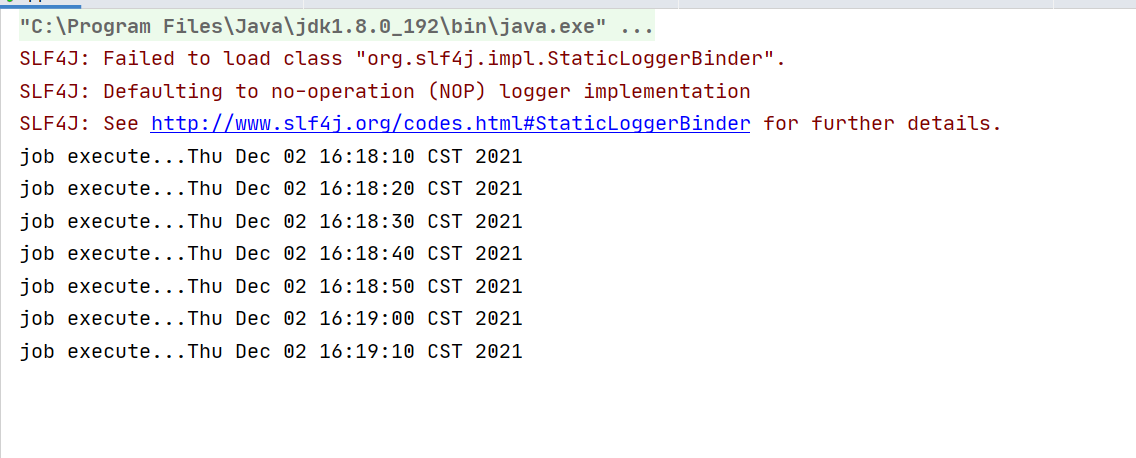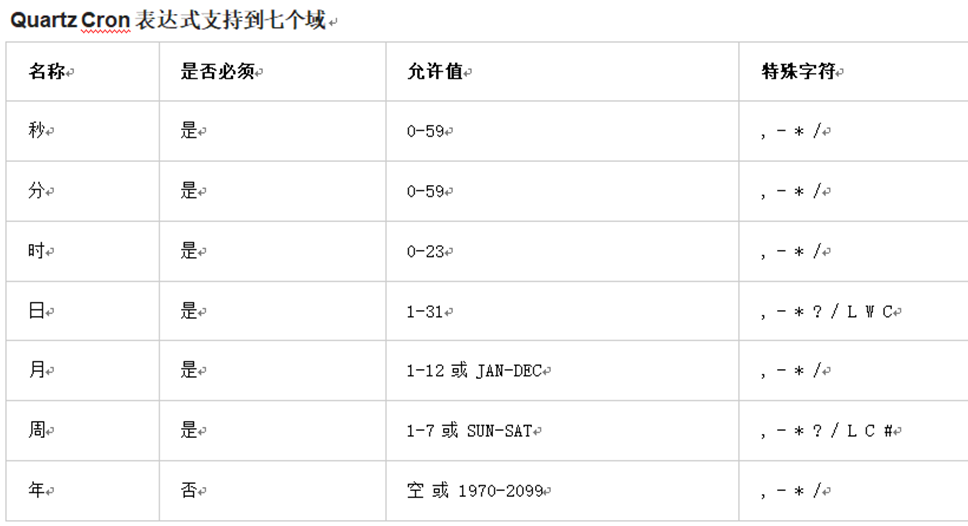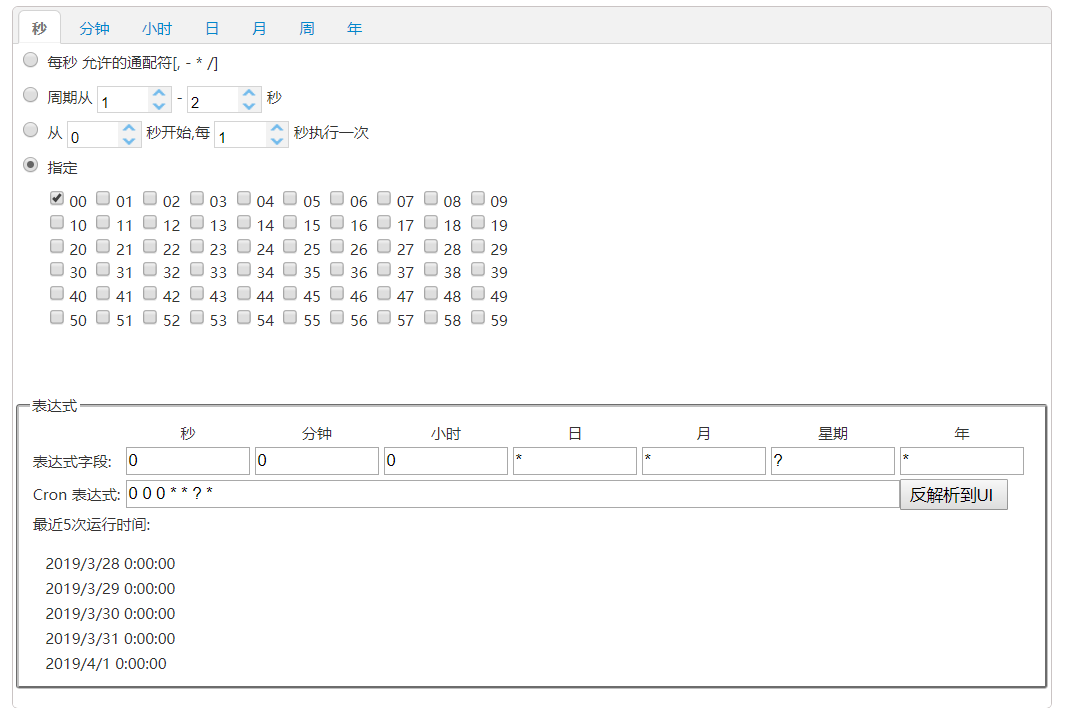Scheduled task component Quartz
4.1 introduction to quartz
Quartz is Job scheduling** (Job scheduling) is an open source project in the field. Quartz can be used alone or integrated with the spring framework * *, which is generally used in actual development. Quartz can be used to develop one or more scheduled tasks, and each scheduled task can be executed separately. For example, it can be executed every 1 hour, at 10 a.m. on the first day of each month At 5:00 p.m. on the last day of each month.
Official website: http://www.quartz-scheduler.org/
maven coordinates:
<dependency> <groupId>org.quartz-scheduler</groupId> <artifactId>quartz</artifactId> <version>2.2.1</version> </dependency> <dependency> <groupId>org.quartz-scheduler</groupId> <artifactId>quartz-jobs</artifactId> <version>2.2.1</version> </dependency>
4.2 introduction to quartz
This case is based on the integration of Quartz and spring. Specific steps:
(1) Create the maven project quartzdemo, import the coordinates related to Quartz and spring, and the pom.xml file is as follows
<?xml version="1.0" encoding="UTF-8"?>
<project xmlns="http://maven.apache.org/POM/4.0.0"
xmlns:xsi="http://www.w3.org/2001/XMLSchema-instance"
xsi:schemaLocation="http://maven.apache.org/POM/4.0.0 http://maven.apache.org/xsd/maven-4.0.0.xsd">
<modelVersion>4.0.0</modelVersion>
<groupId>com.itheima</groupId>
<artifactId>quartdemo</artifactId>
<version>1.0-SNAPSHOT</version>
<dependencies>
<dependency>
<groupId>org.springframework</groupId>
<artifactId>spring-context-support</artifactId>
<version>5.0.2.RELEASE</version>
</dependency>
<dependency>
<groupId>org.springframework</groupId>
<artifactId>spring-tx</artifactId>
<version>5.0.2.RELEASE</version>
</dependency>
<dependency>
<groupId>org.quartz-scheduler</groupId>
<artifactId>quartz</artifactId>
<version>2.2.1</version>
</dependency>
<dependency>
<groupId>org.quartz-scheduler</groupId>
<artifactId>quartz-jobs</artifactId>
<version>2.2.1</version>
</dependency>
</dependencies>
</project>
(2) Customize a Job
package com.itheima.jobs;
/**
* Custom Job
*/
public class JobDemo {
public void run(){
System.out.println("job execute...");
}
}
(3) Provide Spring configuration file spring-jobs.xml to configure custom jobs, task descriptions, triggers, scheduling factories, etc
<?xml version="1.0" encoding="UTF-8"?>
<beans xmlns="http://www.springframework.org/schema/beans"
xmlns:xsi="http://www.w3.org/2001/XMLSchema-instance"
xmlns:context="http://www.springframework.org/schema/context"
xmlns:dubbo="http://code.alibabatech.com/schema/dubbo"
xmlns:mvc="http://www.springframework.org/schema/mvc"
xsi:schemaLocation="http://www.springframework.org/schema/beans
http://www.springframework.org/schema/beans/spring-beans.xsd
http://www.springframework.org/schema/mvc
http://www.springframework.org/schema/mvc/spring-mvc.xsd
http://code.alibabatech.com/schema/dubbo
http://code.alibabatech.com/schema/dubbo/dubbo.xsd
http://www.springframework.org/schema/context
http://www.springframework.org/schema/context/spring-context.xsd">
<!-- Register custom Job -->
<bean id="jobDemo" class="com.itheima.jobs.JobDemo"></bean>
<!-- register JobDetail,The function is responsible for calling the specified through reflection Job -->
<bean id="jobDetail"
class="org.springframework.scheduling.quartz.MethodInvokingJobDetailFactoryBean">
<!-- Injection target object -->
<property name="targetObject" ref="jobDemo"/>
<!-- Injection target method -->
<property name="targetMethod" value="run"/>
</bean>
<!-- Register a trigger and specify the time when the task is triggered -->
<bean id="myTrigger" class="org.springframework.scheduling.quartz.CronTriggerFactoryBean">
<!-- injection JobDetail -->
<property name="jobDetail" ref="jobDetail"/>
<!-- Specifies the time to trigger, based on Cron expression -->
<property name="cronExpression">
<value>0/10 * * * * ?</value>
</property>
</bean>
<!-- Register a unified scheduling factory to schedule tasks through this scheduling factory -->
<bean id="scheduler" class="org.springframework.scheduling.quartz.SchedulerFactoryBean">
<!-- Inject multiple triggers -->
<property name="triggers">
<list>
<ref bean="myTrigger"/>
</list>
</property>
</bean>
</beans>
(4) Write the main method to test
package com.itheima.jobs.com.itheima.app;
import org.springframework.context.support.ClassPathXmlApplicationContext;
public class App {
public static void main(String[] args) {
new ClassPathXmlApplicationContext("spring-jobs.xml");
}
}
Execute the above main method and observe the console. It can be found that the output occurs every 10 seconds, indicating that the custom Job is called every 10 seconds.

4.3 cron expression
In the above introductory case, we specified an expression: 0 / 10 * *?
This expression is called cron expression, which can flexibly define the execution time of the program that meets the requirements. In this section, let's learn how to use cron expressions. As shown below:

The cron expression is divided into seven fields separated by spaces. The last field (year) can be empty. Each field has its own allowed value and some special characters. Using these special characters can make our defined expression more flexible.
The following is an introduction to these special characters:
Comma (,): specifies a list of values. For example, in the month field, 1,4,5,7 represents January, April, may and July
Horizontal bar (-): specify a range. For example, in the time domain, 3-6 represents 3 points to 6 points (i.e. 3 points, 4 points, 5 points and 6 points)
Asterisk (*): indicates that this field contains all legal values. For example, using an asterisk in the month field means that it will be triggered every month
Slash (/): indicates increment. For example, 0 / 15 in the second field indicates every 15 seconds
Question mark (?): it can only be used in the day and week fields, but it can not be used in both fields. It means that it is not specified
Pound sign (#): it can only be used in the week field to specify the day of the week in the month, for example 6#3, which means the third Friday of a month (6 = Friday, 3 means the third week in the month)
50: The last value allowed on a field. Can only be used on day and week fields. When used in the day field, it represents the last day of the month specified in the month field. When used in the week field, it indicates that the last day of the week is Saturday
W: The w character represents the working day (Monday to Friday). It can only be used in the day field. It is used to specify the nearest working day from the specified day
4.4 cron expression online generator
We introduced cron expressions earlier, but there are still some difficulties in writing their own expressions. We can use some cron expression online generators to generate expressions according to our needs.
http://cron.qqe2.com/
